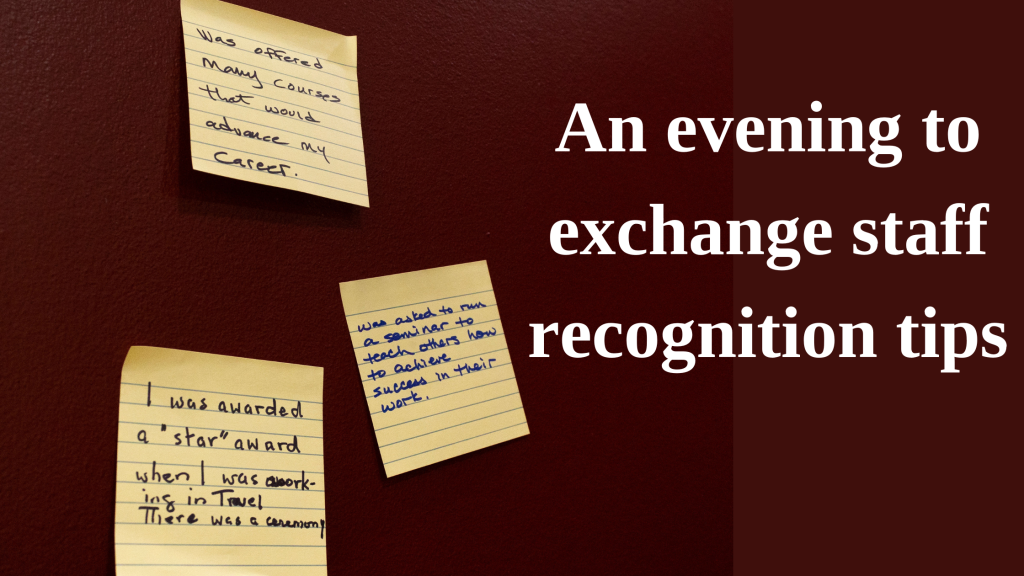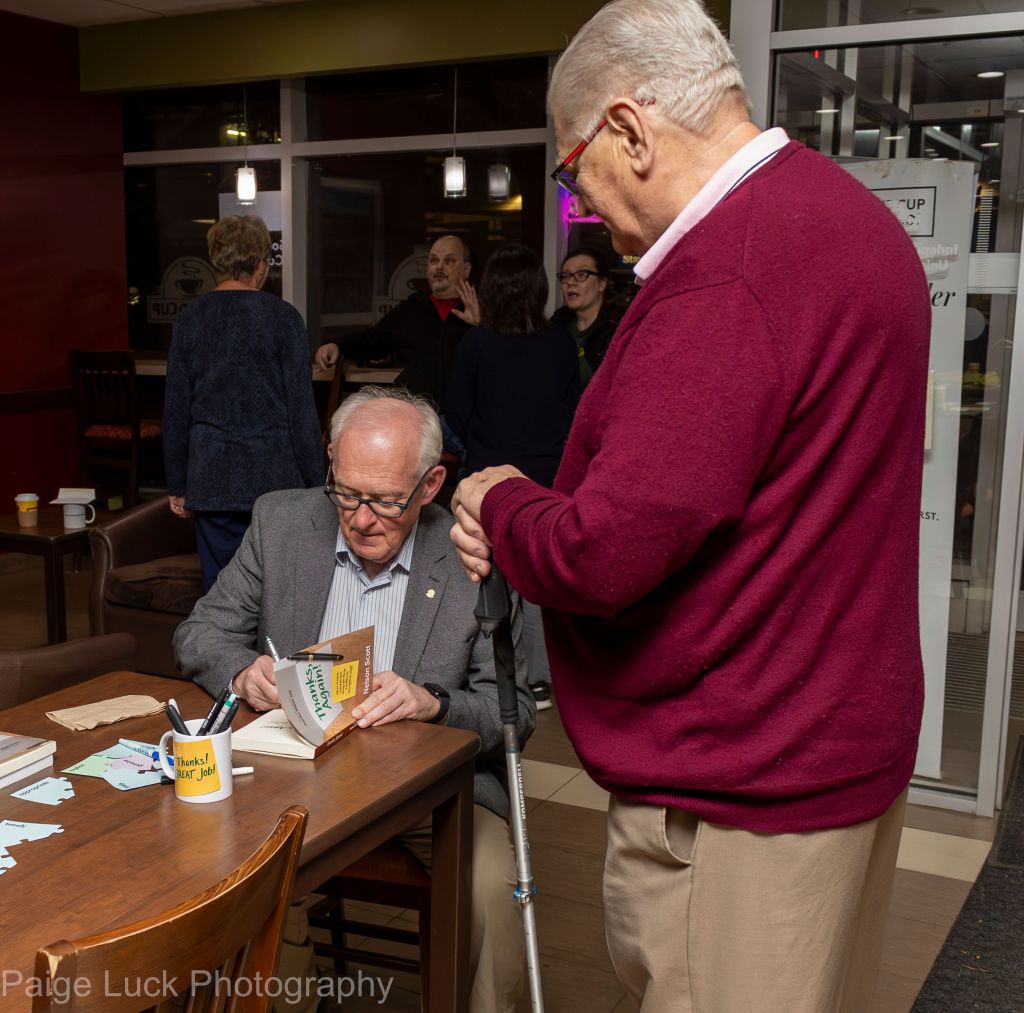Over more than two decades of speaking and training, I have discovered that audience members have a great deal of wisdom to share with others.
That’s why I invited friends, neighbours and others who attended the October 3 book launch of Thanks, Again! to share their most memorable staff recognition experience. They wrote their descriptions on sticky notes that were posted on the wall of the University Terrace Second Cup Cafe, which I selected as the location for this event because it’s where I wrote most of Thanks, Again!
This was the most interesting part of the evening. There were posts that reminded us of best practices for staff recognition. What some participants described were variations of suggestions in Thanks, Again!, while other examples were new to me.
Collectively, what audience members shared was so good that their posts deserve to be seen by more than those who were in the Second Cup on that Tuesday evening. The participants’ staff recognition memories are included later in this article.
In addition to being a time to share staff recognition tips, the evening was also an opportunity to raise money for Edmonton’s Food Bank and autograph copies of Thank, Again!
Because I am a trainer, the evening evolved into a mini workshop. Those in attendance discussed the five ingredients of meaningful (GREAT) staff recognition and applied Tip #1 from the new book: The 4 As.
All staff recognition techniques are not created equally. You will encounter some ideas that you will choose to Adopt, others you will need to Adapt to fit your staff and workplace culture, and some you should Avoid because they are just not right for your circumstances.
Finally, you should Abandon existing practices that have become stale and no longer work as they once did.
There were certainly practices that deserve to be adopted or adapted in what participants posted on the wall, which are listed here along with my comments.
“Eye contact. Smile. Sincere.” All these gestures make staff recognition seem Genuine.
“Staff members who left notes and spoke to other staff and supervisors personally for a job well done.” These are simple ways to recognize staff and co-workers that can mean a lot to some staff members.
“One company I know creates gift baskets with individual items that demonstrate each recipient’s interests and hobbies.” A wonderful example of recognizing staff in Appropriate ways, which is only possible when you know them as individuals.
“A former boss helped me get over a bad breakup by letting me call them after work.” Only a leader who cares about staff members as individuals and understands that there’s more to people’s lives than work would do this.
“Getting an email from someone you respect but don’t expect to hear from.” This is a great way for senior leaders to become involved in recognizing existing staff and welcoming new people to the team—even before Day One.
“Was offered many courses that would advance my career.” Learning about people’s hopes for the future creates opportunities to link career goals and staff recognition.
“Was asked to run a seminar to teach others how to achieve success in their work.” That’s something that would only happen if the boss felt you had expertise worth sharing.
“A boss gave me a box of Crave cupcakes on his first day in the office as appreciation.” Also, a great way to involve existing staff in welcoming some new.
“I was awarded a ‘star’ award when I was working in travel. There was a ceremony.” An example of “formal” recognition that was meaningful to its recipient.
All these examples of recognition show that what makes recognition meaningful varies from one person to the next. They highlight the importance of knowing the people we work with well enough to know what’s important to them, so we can personalize recognition by ensuring the recognition is Appropriate.
==
Thanks, Again! Is available at Audreys Books, 10702 Jasper Ave., Edmonton (and on their website) and online from Amazon, Indigo, the FriesenPress Bookstore and on the iBook app.




